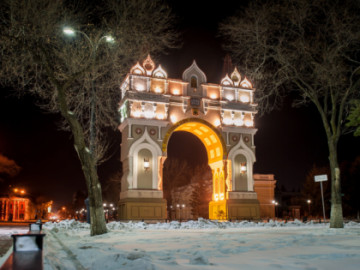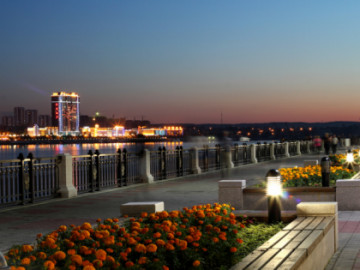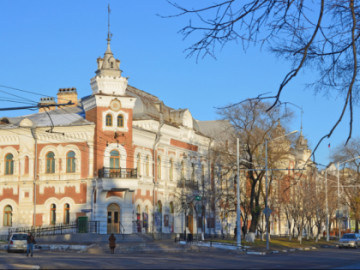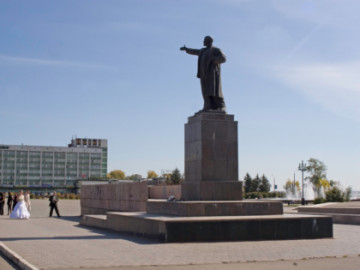Blagoveshchensk: gold and dinosaurs
Blagoveshchensk in the Amur Region is the only administrative center in Russia bordering to another state. It is separated from the Chinese city Heihe only by the Amur River. Since 2004 a visa-free regime has been established between these two cities. The gold and cultural capital of the Far East was famous for the fact that in the beginning of the 20th century the skeletons of the last Asian dinosaurs were found here. This inscribed Blagoveshchensk in the history of world science forever.
Отели города Blagoveshchensk
See all
Restaurants

60-e
Bar • Café • Catering
+7 4162 514410
Payment methods:

61 Shtat
Restaurant • Snack Bar • Bar • Café • Catering
+7 4162 375655
Payment methods:

Asahi
Restaurant • Sushi bar • Café • Catering
+7 4162 215959
Payment methods:

COVA
Club • Karaoke • Bar
+7 4162 505510
Payment methods:
All sights in BlagoveshchenskSee all
Places of interest in Blagoveshchensk

Triumphal Arch
Architectural Monuments

Amur River Embankment
Other places

Amur Regional Local Lore Museum
Museums and Exhibitions

Cathedral of the Annunciation
Architectural Monuments • Temples and places of worship • Cathedrals and churches • Other places

Lenin Square
Other places

Paleontological Museum
Museums and Exhibitions





 Museums and Exhibitions
Museums and Exhibitions
 Other places
Other places
 Architectural Monuments
Architectural Monuments
 Temples and places of worship
Temples and places of worship